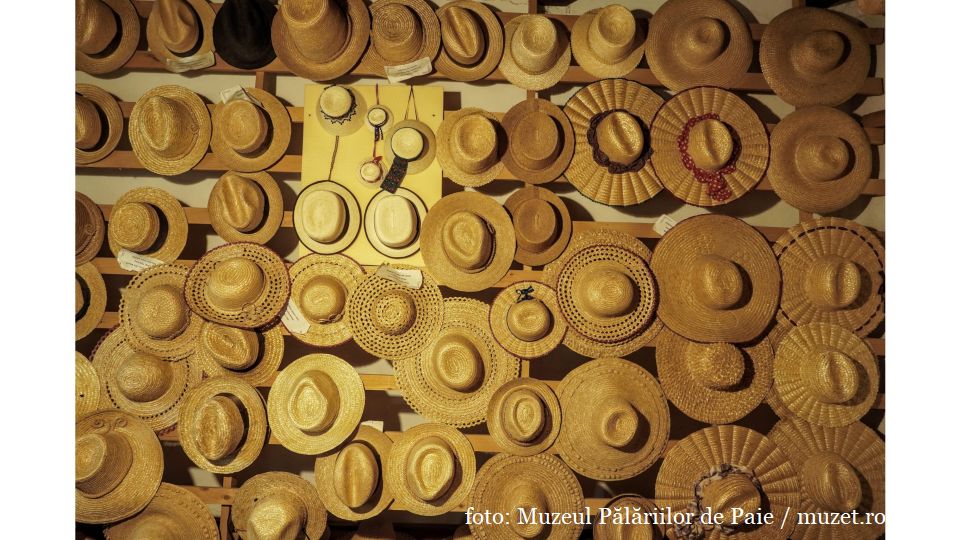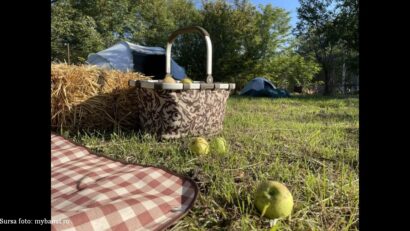Museums in Eastern Transylvania
In a digital age where tourist destinations compete in visibility, a region of Romania, unfairly left in the shadows, is now revealing its cultural wealth through a modern and accessible initiative.

Daniel Onea, 13.11.2025, 13:25
Eastern Transylvania, a space of ethnic confluences and living history, is brought to the attention of the national and international public through the project “Museums in Eastern Transylvania”, known for short as “Muzet”. We spoke with Alexandru Mihăilă, president of the Provil Association, to understand the philosophy and impact of this endeavor. His association deals with the implementation of projects in the cultural sphere and the tourist promotion of local heritage. The “Muzet” project materializes in a complex digital platform, which includes the website muzet.ro, a Facebook page, a YouTube channel and dedicated mobile applications for Android and iOS systems. To better understand the mission of this project, Alexandru Mihăilă explains the association’s vision of the role of museums in today’s society and how this specific project came about: “We believe that museums represent a bridge between generations, through which traditions, customs and various elements from the past are transposed to the present. We also believe that it is our duty to carry these elements forward. We took advantage of the existence of open funding sessions at the Romanian Government, where we applied with this project. To be more specific, we applied twice: first with the first edition, in which we targeted five museums from the Harghita and Covasna areas, and later, in the second edition, we added another five museums from a nearby geographical area, more precisely from the counties of Brașov and Mureș.”
So, a project developed in two stages, which now covers ten important museums, from four counties. The objective is not only to attract foreign tourists, but also, essentially, to reconnect the local public with their own heritage, a heritage that, often, those who live in its proximity can ignore: “The declared goal was to bring to light the cultural and historical heritage of the eastern area of Transylvania, offering it also to the local public. I say this because, often, we tend not to appreciate what we have close to us. We wanted it to be an incentive for both local factors and for Romanian and foreign tourists. That is why we took care that the project was also translated into English. All the elements found on the site are bilingual, Romanian-English, so that tourists from all parts of the country, and especially from Europe, can access this information.”
Eastern Transylvania proved to be a pleasant surprise, which is found in the uniqueness of each museum. We asked our guest, Alexandru Mihăilă, president of the Provil Association, to recommend a place that particularly impressed him. Although he emphasized that each museum has its own charm, he focused on one particular destination: the Straw Hats Museum in Crișeni. “First of all, the peasant cottage in which the museum is housed is impressive, a house that is over 130 years old. There, I noticed, as an unusual fact, a separate entrance for the cat. Then, I was impressed by the warmth with which the people welcomed us and by the natural setting in which the museum is located, an area that seems to have been forgotten by the world, where we felt like we had gone back in time. In addition to all this, I was pleasantly impressed by the huge straw hat. It is a giant hat, 2 meters in diameter and over 2 kilograms in weight, which required over 12 days of work, approximately 500 meters of raw material. That means about 22,000-23,000 strands of straw and around 1,700-1,800 meters of thread.”
The recommendations continue with another point of interest- the Sighișoara History Museum: “It is a remarkable destination and, as far as I know, it is the only museum in Romania organized vertically. Of course, the museum is an integral part of the UNESCO World Heritage, as is the entire central area of the Sighișoara citadel. Here, too, visitors discover very interesting elements. For example, I remember a hearth-altar from the Bronze Age, which functioned as a kind of solar calendar. There is also a very beautiful and detailed model representing Sighișoara in 1735. There are valuable ethnographic exhibitions, but also Saxon ceramics specific to the area. In terms of furniture, there are special pieces, such as rococo-style tables or a Biedermeier chest of drawers. The medieval craft guilds that defined the life of the citadel are also represented. On the penultimate floor, the clock mechanism in the tower can be seen, a still functional mechanism dating back to 1906. And, as another unique fact, there is also a small exhibition dedicated to Hermann Oberth, the pioneer of astronautics. There are, therefore, extremely diverse elements condensed into a relatively small space.”
The Straw Hat Museum and the History Museum in Sighișoara demonstrate that the project is not just a digital catalog, but a living platform, which is already generating international connections and valuable feedback. Success, in Alexandru Mihăilă’s vision, is measured in the real interaction that the platform facilitates: “I was pleasantly surprised to see the success of the project. Of course, success can be relative, everyone measures it differently. For me, the joy is that I am constantly contacted by people both from Romania and abroad, who want to know more details. For example, a student from the Czech Republic, specializing in restoration, had as her research topic some women’s shoes from the 1700s. She discovered on our website a pair of shoes almost identical to the one she was studying and asked me for more details. I gladly put her in touch with representatives of the Sighișoara History Museum to provide her with the necessary details and to be able to continue her studies.”
This example shows how a well-designed digital platform can shorten distances and serve as a valuable academic and tourist resource. The “Muzet” project is an open invitation to explore a cultural treasure defined by a unique blend of Romanian, Saxon and Hungarian traditions, a heritage that, thanks to these efforts, is now accessible just a click away, at: muzet.ro. (EE)






























